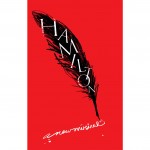I’m still a little swoony from the news that GetReligion is joining Patheos, but that’s not the only cool thing happening outside my channel. Over in the Mormon channel, Alan Hurst is exhorting his coreligionists to write more fantasy novels.
But good fairy stories are not merely fables, presenting simple lessons in didactic style. They deal with deeper matters—a truth I learned from the great fairy-tale writer of our time, J.R.R. Tolkien. Tolkien hated shallow allegory, grumpily refuting popular attempts to read his masterpiece as a veiled retelling of World War II. Yet at a deeper level his work is fraught with philosophical and even theological significance, which he privately acknowledged. Tolkien’s elves, men, dwarves, and hobbits represent various aspects of human nature, as do his orcs and goblins, who are sadly the races of Middle Earth that Tolkien thought most resembled modern society. The story of the One Ring is a lengthy meditation on technology, pride, and power, on the sinful wish to reject the place the Creator intended for us and become gods ourselves. Attentive Catholic readers will find still more meaning as they ponder Tolkien’s allusions to Mary (Elbereth, Galadriel) and the Eucharist (lembas, the Elvish waybread).[1] It is of course possible for other forms of literature to deal with these themes, but such attempts tend to be blurred by their too close association with the everyday and its conventions, and as a result the themes of other literature tend to stay closer to home. In good fairy tales, the distractions of the mundane are stripped away by the fantastical setting, and the remaining resemblances between the story world and our world are only those that really matter.
Which means I’m pretty much obligated to plug Orson Scott Card’s Enchantment. In this novel, a young scholar in Old Church Slavonic and folklore ends up transposed to the time he is studying. Being genre savvy helps him a little, but he’s much more interested in preserving the folktales of the village than in rescuing the princess. Also, at some point Baba Yaga steals a plane.

Maybe it’s not obvious that an article on Apple’s dock connecter for iPhones (and the rumored redesign) can be magical, but I found Cult of Mac’s piece to be entrancing in a totally The Way Things Work kind of way. It’s not overly technical, there are no prerequisites for the article, and it manages to give you a beautiful sense of the logic of how these connectors are designed. Really, pop over and read it.
Also in the just plain cool and full of grace category, TYWKIWDBI found a video montage of Olympic uneven bar routines from the 1950s to the present. Like everything in gymnastics, the elements have gotten a lot more complex and difficult, but it looks like there’s been a big aesthetic shift, too.
The early gymnasts still look agile and strong, but it seems like more of a climbing kind of grace, whereas today’s women are focused on flying.
And now for the opposite of grace… the Bulwer-Lytton worst opening sentence winners have been announced! And my favorite one cropped up in the crime category:
She slinked through my door wearing a dress that looked like it had been painted on … not with good paint, like Behr or Sherwin-Williams, but with that watered-down stuff that bubbles up right away if you don’t prime the surface before you slap it on, and – just like that cheap paint – the dress needed two more coats to cover her. — Sue Fondrie, Appleton, WI
Though this general dishonorable mention is fun, too.
Ronald left this world as he entered it: on a frigid winter night, amid frantic screams and blood-soaked linens, while relatives stood nearby and muttered furious promises to find and punish the man responsible. — Rebecca Oas, Atlanta, GA

I think it’s pretty clear that all the hypothetical books whose first sentences were entered in Bulwer-Lytton would be improved by the presence of female sword swallowers. How lucky it is that io9 furnished a gallery of photos from the 1800s for your reference.
I want to read a blog that does in-depth analysis of costuming in movies (in much the same way that Tom and Lorenzo do close readings of how costuming reveals character in Mad Men in their Mad Style posts). So if you’ve got any recommendations, I’m all ears.
Right now, my sartorial analysis is pretty catch as catch can, but I did spot and enjoy GQ‘s interview with the costumer of The Dark Knight Rises.
GQ: Tell me about Bane’s jackets, specifically the shearling coat, which we swore we saw on the runway at European Fashion Week last Spring.
Lindy Hemming: It was the first coat in our research of military wear, the type people would wear in Eastern Europe or Northern Pakistan, where [mercenaries] find military surplus and wear it. I found a fantastic shearling Swedish winter coat, which their army wears, and we used that as our first model. [The Dark Knight Rises director] Chris Nolan thought there was an element about Bane that was of the French Revolution. There was kind of a romanticism about him, as well as being very bad. [laughs] So I tried to combine the jacket with a French Revolutionary-style high-standing collar, which goes up and then comes back down. Then of course, while we were getting into it, an issue of GQ comes out with the best coats you’ve ever seen in your life with one that looked similar. So that did not make us very happy, but I think hardly anyone picked up on it.
And if we’re going to talk costuming, I’ll close these quick takes with a quick change music video:
For more Quick Takes, visit Conversion Diary!












